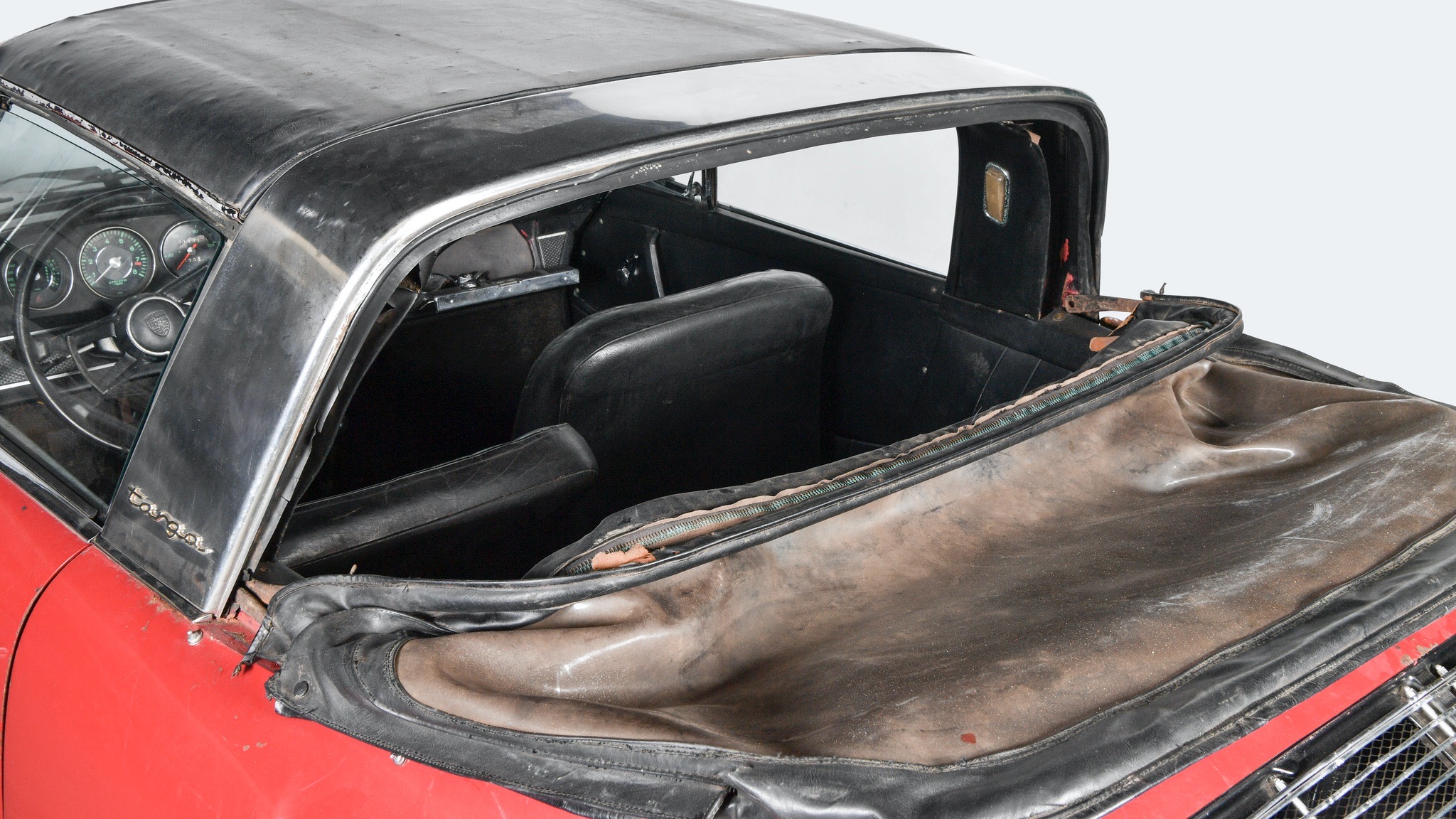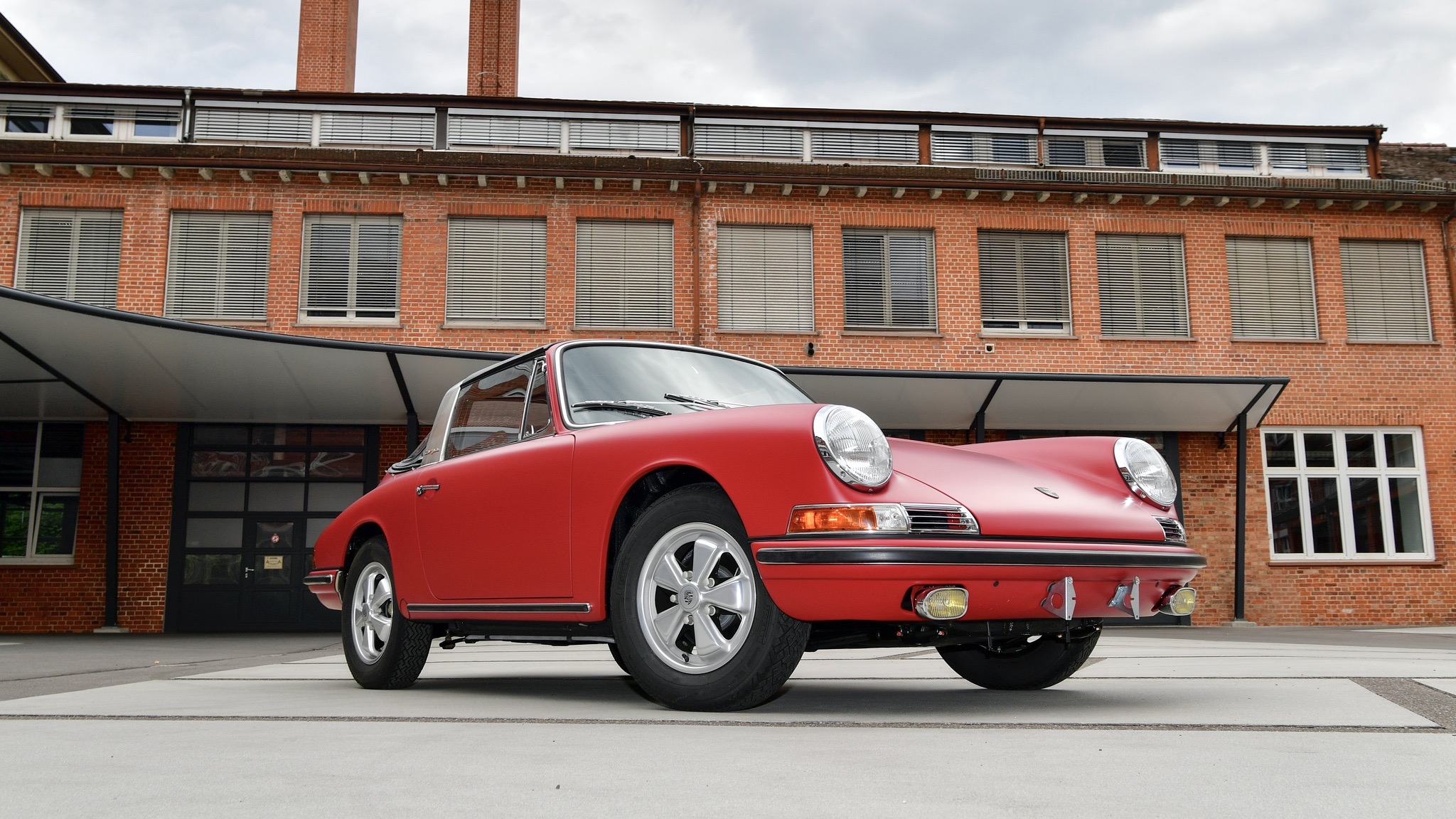

Quite a few companies will be happy to restore your early air-cooled Porsches, yet few can do a job as authentic as Porsche Classic’s Factory Restoration team lead by Uwe Makrutzki. This 1967 911S Targa is one of just 925 made between 1966 and 1968 with the combination of the 160-horsepower S engine, short wheelbase chassis, and the soft windows that were gradually replaced by glass ones in 1967. What’s more, this car was delivered to the Porsche dealer Hülpert in Dortmund on Jan. 24, 1967, which makes it the first Targa delivered in Germany, as well as a very early 911S indeed.
Porsche presented its 911 Targa at the 1965 Frankfurt Motor Show, calling it the first “safety cabriolet” in the world to address American safety concerns. The production-bound concept featured a roll-over bar almost eight inches wide, along with a removable roof and rear mini soft top with a plastic window. This was followed shortly by the introduction of the panorama rear window with heatable glass. The name “Targa” was derived from the Targa Florio endurance race on the island of Sicily that Porsche had won four times up to that point. Not that it means much today, but the additional cost over the Coupé was 1,400 Deutschmarks, which brought the 1967 911S Targa’s base to DM 25,880. Meanwhile, Americans paid around $600 extra for the Targa.








For that kind of a premium, Porsche gave customers an open-top sports car weighing 2,270 pounds, with a five-speed gearbox and a 2.0-liter flat-six producing 160 horsepower at 6,600 rpm. This was thanks in part to a pair of three-barrel downdraft Weber 40 carburetors, which also helped offer 132 pound-feet of torque with the Porsche’s tachometer needle at 5,200. With this engine, the 911S was a 140-mph affair.
Germany’s first 911S Targa served as a demonstration car for the dealer before it was sold off to the U.S. in 1969. By 1977, it ended up in Long Beach, only to get parked in a doorless garage, covered by a plastic tarp for the next 39 years. Unearthed by a Porsche collector at the end of 2016, the good news was that the Targa was complete, featuring a number of optional extras such as a Webasto auxiliary heater, tinted windscreen, Blaupunkt Köln radio, leather seats, halogen fog lamps and outside thermometer.










Porsche Classic’s team of around 30 specialists complete up to eight nut-and-bolt restorations a year, also taking care of the engines, gearboxes, and other partial restoration jobs of around 70 vehicles. As workshop master Uwe Makrutzki explains, replica parts from third-party suppliers are out of the question. Instead, they have access to more than 60,000 different genuine spares, as well as the original straightening sets, frame gauges, data sheets and technical drawings.
This job required a number of small bits like cable clamps, rubber grommets and sealing plugs for the flat-six engine. Then, Porsche had to re-create the outer skin of the Targa roof, since the material it uses today has a different grain, and while it’s more robust, it’s not something the customer could see on their 1967 car. As a result, Porsche Classic now has an authentic fabric ready for any upcoming soft-window Targa job.
Finished in its factory Polo Red after around 1,000 hours of work on the body, the client also specified the traditional two-component black paint for the chassis, engine panels and air cleaner instead of the modern powder coating used by Porsche today. Since the car will be driven, a painted-on protection film was added as well, which has a slight matting effect.








The collector getting back his Targa after three years of waiting has already dropped his next project off at Porsche Classic: A very early 928.
Got a tip on air-cooled Porsches left parked in garages since the 1970s? Send us a note: tips@thedrive.com